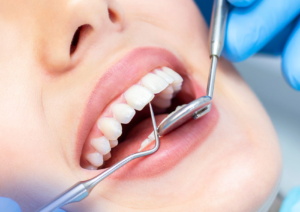Dental SEO is a complex science that encompasses the prevention, diagnosis and treatment of diseases of the oral cavity and supporting structures. It also includes orthodontics and dentofacial orthopedics, periodontics, endodontics and prosthodontics.
Like medical doctors, dentists complete a lengthy path of education and training before they can practice. They also work with a team of dental hygienists and assistants, as well as lab technicians.

Practicing good dental hygiene helps prevent oral health concerns such as tooth decay and gum disease, which can have far-reaching implications for your overall wellbeing. Moreover, these practices control the spread of bacteria from the mouth to other parts of the body, which can lead to diseases such as pneumonia and bronchitis. This is why it is important to brush twice a day and floss regularly, as well as schedule regular dental visits every six months.
Aside from the benefits of practicing good oral hygiene, having a bright smile can boost your self-esteem and increase your confidence in social situations and work. In addition, it can improve your general mood and boost your immune system. Fortunately, there are many ways to achieve a healthy and beautiful smile, including regular visits to your dentist and using oral care products with the ADA Seal of Acceptance.
Dental hygiene is a field that deals with the prevention of dental problems such as tooth decay and gum disease, as well as other issues like infection, inflammation and bone degeneration. This profession is regulated in the United States by state dental boards and typically requires an associate degree from a dental hygiene program or a bachelor’s degree in a relevant field.
A dental hygienist’s role is more than just clinical; it can also be an educational and advocacy tool for patients to take charge of their own oral health. Hygienists should be encouraged to have deeper interactions with patients and impart invaluable advice, fostering a deep and fulfilling patient-practice relationship. They can also be an integral part of the decision-making process, contributing their expertise and ensuring that practice policies are patient-centric.
As dental practices look toward the future, a model that recognizes and values the contribution of the hygienist will lead to greater patient satisfaction and improved outcomes. This will require a rethinking of the way that practices approach their workforce and a commitment to integrating hygienists into the core of patient care. This can be accomplished by encouraging a deeper interaction between hygienists and patients, providing opportunities for growth and competitive pay, and including them in the process of creating practice policies.
The toothbrush is an instrument used to clean the teeth, gums and tongue. It consists of a head of tightly clustered bristles, atop which toothpaste can be applied, mounted on a long handle.
Brushing is considered an essential part of oral hygiene and has been in use for thousands of years. Earlier versions of the toothbrush were simple, like an aromatic twig from Neem (Aralia malabarica) which people chewed until the end was frayed. These brushes were effective and could be used to remove plaque, prevent gingivitis, reduce stomach ailments and control phlegm in some cases.
A toothbrush is a complex tool and the choice of its bristle texture, size, shape and design has an impact on the quality of its cleaning. For example, hard bristled toothbrushes can cause irreversible enamel abrasion and gum damage. On the other hand, soft-bristled toothbrushes may not be as efficient in removing plaque and can be more uncomfortable for patients.
Choosing the best toothbrush is a personal preference, but for most patients it is recommended to opt for a manual or electric toothbrush with an ADA-approved head of soft bristles. It is also advisable to choose a brush with an ergonomic handle and advanced features like pressure indicators and personalized timers.
Toothbrushes should be stored in a designated area with a lid that covers the bristles. This will protect the bristles from damage caused by contact with other toothbrushes and keep them hygienic and clean. It is also advisable to store them in the bathroom or combined toilet/bathroom away from the kitchen and bedroom as these are more prone to contamination.
Besides the regular toothbrushes, Dental City offers interdental brushes to remove food debris and plaque from between the teeth, which are difficult for regular brushes to reach. These brushes are shaped differently and have flexible necks to help access those hard-to-reach places, making them a good alternative for patients with braces, bridges or other fixed appliances. They also work well for adults with dexterity challenges. They are also available in a range of colors to suit each patient’s preference and are suitable for people of all ages.
Toothpaste (dentifrice) is an important part of oral hygiene and should be used with a toothbrush as often as possible to remove food debris, reduce the build-up of plaque and prevent gum disease. It can also help reduce sensitivity and whiten teeth. It is recommended that you use toothpaste containing fluoride, as this is very effective in the prevention of tooth decay. It is also recommended that you choose a toothpaste with the American Dental Association seal of approval, as this indicates that it has been independently tested to ensure that it does what it claims.
Toothpastes come in a variety of flavours and textures, with different formulations to meet particular needs. Most contain a mild abrasive to help remove stains and debris from the teeth, as well as a binding agent to hold the ingredients together. The abrasive component is most commonly silica, which has the advantage over other abrasives in that it does not react with fluoride. Sodium silicate and aluminium hydroxide are also sometimes used. Other binding agents include carrageenan (seaweed gum), gum arabic and sodium carboxymethylcellulose. Preservatives, such as benzoates and methyl and ethyl paraben, are added to limit bacterial growth on the organic binders and humectants.
In addition to these main ingredients, the majority of toothpastes also contain therapeutic agents to improve plaque control or sensitivity, prevent tartar, and promote gum health. Some of these compounds are included in all types of toothpaste, while others are only found in products designed for specific purposes, such as whitening or anti-sensitivity.
Besides these active ingredients, most toothpastes also contain solvents to keep the ingredients mixed together and a viscosifier to give the paste its texture. Solvents can be derived from glycerol, sorbitol, propylene glycol and other polyalcohols. The humectants – such as xantham gums, carrageenans and alginates – serve to retain moisture in the toothpaste and prevent it from hardening when exposed to air. They can also add a sweet taste to the finished product. Finally, a wide range of flavourings are also added. Peppermint, spearmint, cinnamon and wintergreen are some of the most common.
Tooth sensitivity, also known as dentin hypersensitivity, can develop over time as a result of enamel wear and receding gums. It happens when the softer, inner part of your tooth called dentin becomes exposed, revealing tiny holes known as tubules. When a trigger, such as hot or cold food or drink, comes into contact with these tubules it stimulates the nerves inside your teeth, causing that characteristic short, sharp pain.
Sensodyne is a toothpaste that can help relieve these symptoms. It contains potassium nitrate which depolarizes the nerves that cause tooth sensitivity, giving you relief from painful triggers. It also includes stannous fluoride which builds a protective layer over the sensitive areas of your tooth to provide long lasting protection.
To get the most benefit from Sensodyne, it is important to use it twice a day, every day, in place of your regular toothpaste. Use a pea-sized amount of the toothpaste and apply it to your toothbrush, gently brushing your teeth for at least 1 minute each time. Ensure you brush all the sensitive areas of your mouth. You can rinse your mouth with water after brushing to remove any excess paste.
If you are experiencing sensitivity, it is best to consult your dentist for advice on how to care for your teeth and how to prevent sensitivity from developing in the future. They will be able to diagnose whether you have sensitivity and recommend a treatment option that is right for you.
Some Sensodyne products contain Novamin, a natural mineral which helps to fill in the microscopic holes that can make your teeth more sensitive. These ingredients are sourced from trusted suppliers, but GSK cannot exclude the possibility that traces of gluten could be present in some of their products due to third party manufacturing systems and the fact that the final product does not get tested for gluten by GSK Consumer Healthcare. However, the majority of Sensodyne products are gluten free and can be used by those with a gluten intolerance. Please check the individual product packaging for further information on this.

